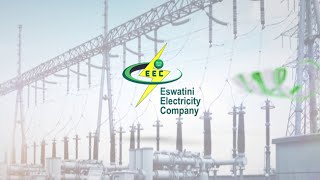By Bahle Gama
In a bid to cushion electricity consumers from rising costs, the Minister of Natural Resources and Energy, Prince Lonkhokhela, has directed the Eswatini Electricity Company (EEC) to implement stringent austerity measures.
This directive, outlined in the 2024/25 performance report tabled in Parliament, aims to ease the financial burden on both consumers and the government while ensuring the sustainability of the country’s power sector.
The Minister emphasized that the government remains committed to addressing the funding gap that may arise because of this intervention.
RELATED: EEC applies for a notable tariff increase of 25.51% in 2025/26
He assured that “any financial shortfalls at EEC would be managed economically and prudently to maintain stability in the electricity sector.”
The decision follows the government’s keen observation of the robust public participation in the electricity tariff review process.
The Eswatini Energy Regulatory Authority (ESERA) conducted the review in strict adherence to legal provisions, ultimately approving a lower-than-requested tariff increase for EEC.
EEC had initially sought a 25.99 per cent tariff hike for the 2025/26 financial year and a 31.9 per cent increase for 2026/27.
However, ESERA approved an average increase of 14.67 per cent and 10.91 per cent for the respective financial years.
This would have meant that a domestic consumer would receive 38 units for E100 in the first year after the increase would be implemented in April 2025.
Recognizing the potential economic strain on consumers and the need to curb inflation, the government, as the sole shareholder of EEC, intervened further.
It resolved to cap the average electricity tariff increase at 8 per cent for 2025/26 and 7 per cent for 2026/27, ensuring a more manageable rise in electricity costs for households and businesses alike.

Beyond cost control measures, the Minister commended the EEC for its continued efforts to enhance the security of the country’s power supply.
A significant development in this regard is Eswatini’s partnership with Kenya Electricity Generating Company (KenGen) to explore geothermal energy potential.
KenGen is currently conducting geoscientific studies to identify viable geothermal power generation sites in Eswatini. Three key areas are:
- Mvutshini – Lobamba Springs and surrounding areas
- Mkoba Springs and surrounding areas
- Lubombo Plateau Zone and Siteki areas
“The exploration of geothermal energy represents a crucial step toward diversifying Eswatini’s energy mix, reducing dependency on imported power, and ensuring long-term sustainability in electricity generation,” said the Minister.
RELATED: EEC E34 million thermal energy deal moving full steam ahead
According to the Ministry, the government’s intervention in electricity tariffs reflects a broader strategy to strike a balance between affordability for consumers and financial sustainability for EEC.
With the global energy crisis and inflationary pressures affecting households and businesses, this measured approach aims to safeguard economic stability while fostering innovation in local energy production.
“As Eswatini continues to develop its energy sector, these strategic measures, including austerity at EEC and investments in renewable energy, will be key to securing an affordable and sustainable power supply for the nation,” added the Minister.


